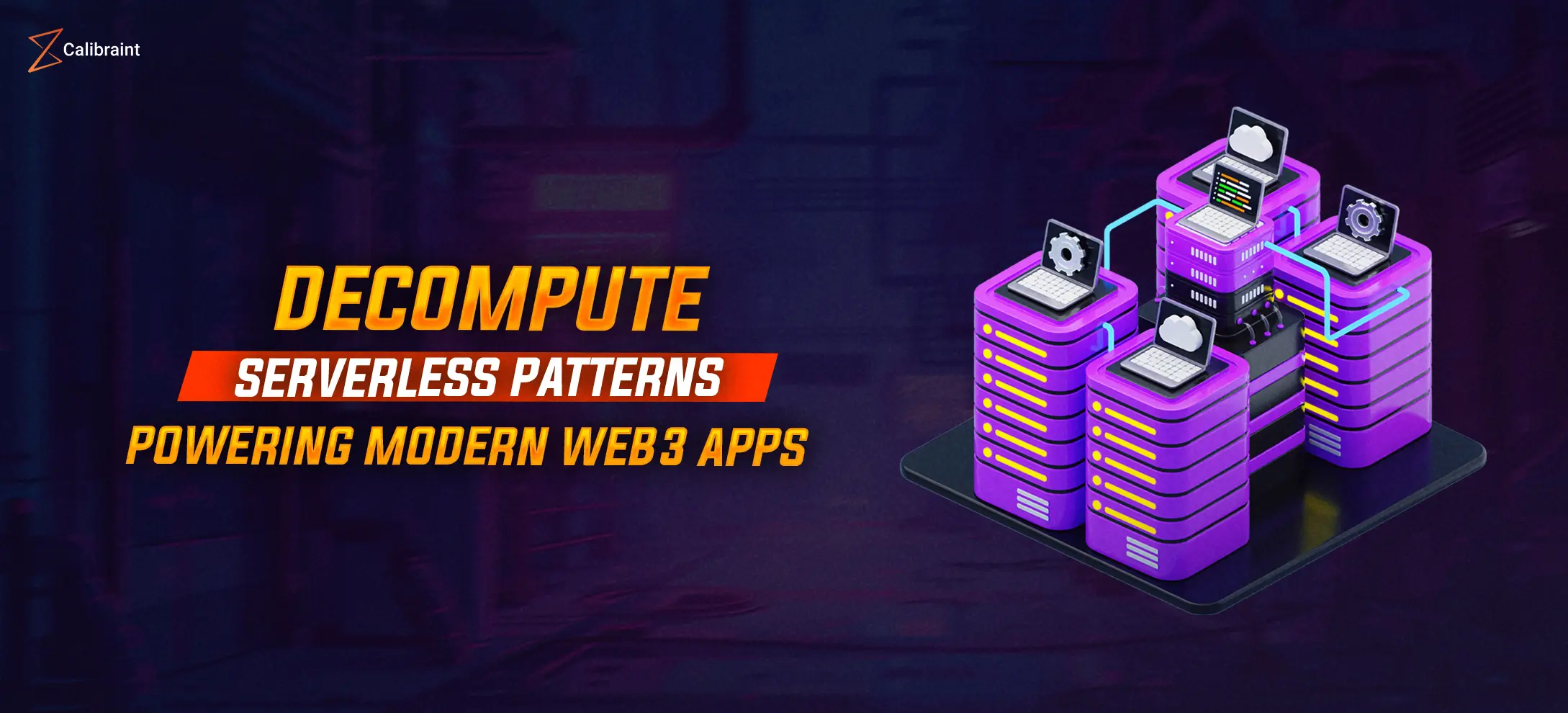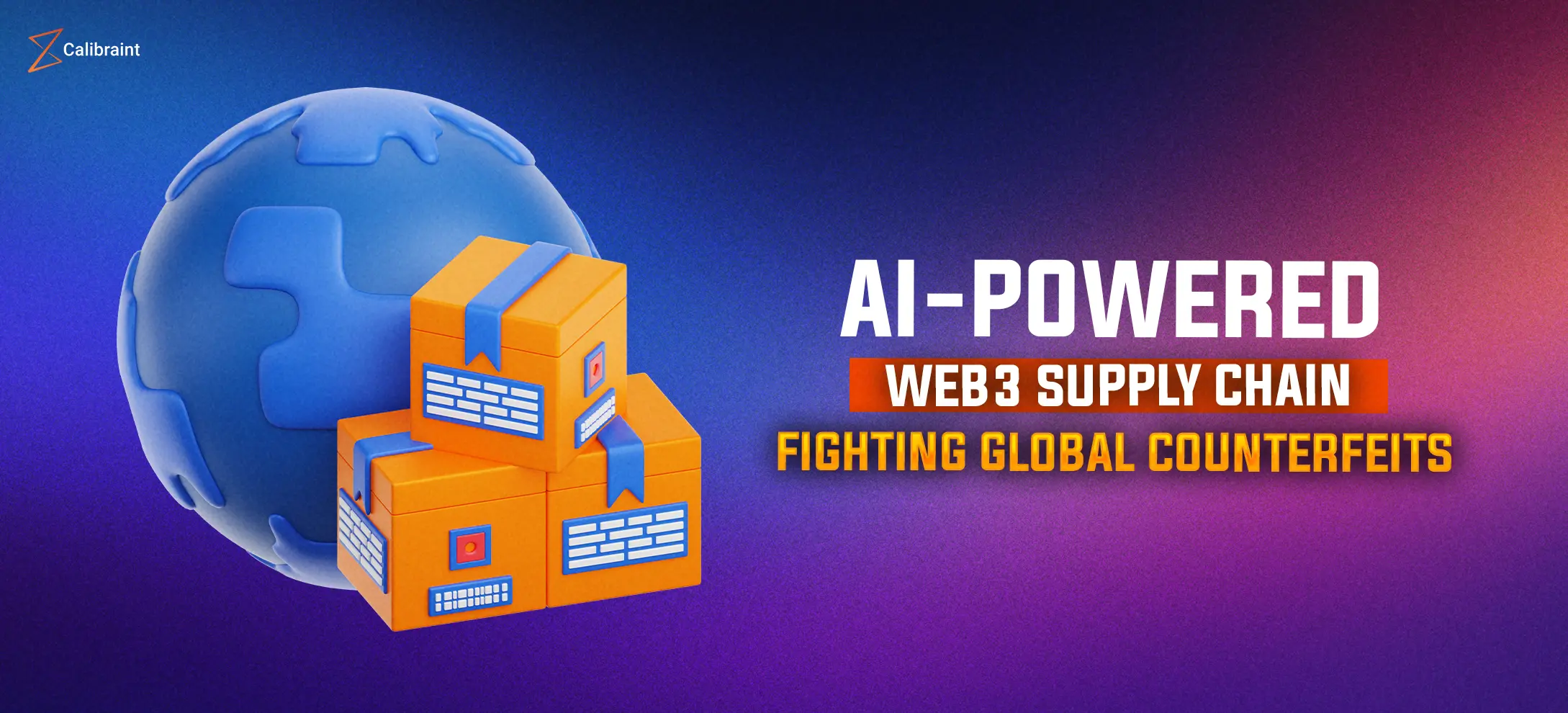Web3 Messaging App: Redefining Enterprise Communication in the Decentralized Era
Calibraint
Author
September 11, 2025
Last updated: November 14, 2025

The Changing Face of Digital Communication
By 2024, messaging had already become the default medium for human interaction, with more than 4 billion global users relying on apps like WhatsApp, Slack, and Telegram for work and personal life. Yet, as adoption soared, so did concerns about data privacy, vendor lock-in, and compliance risks.
The market is signaling a shift. Analysts predict the Web3 messaging tools market will grow from USD 1.26 billion in 2025 to USD 22.8 billion by 2035 at a CAGR of 33.6%. Likewise, the broader Web3 market is projected to hit USD 33.53 billion by 2030, expanding at a CAGR of nearly 49.3%. These numbers aren’t just impressive, they’re a clear signal that enterprises are searching for a different model of communication.
That’s where the Web3 messaging app steps in. Instead of relying on centralized servers, it introduces decentralized technologies that give organizations security, transparency, and ownership over their data. And more importantly, it creates space for integrating digital assets, governance models, and automation all inside a tool most teams already use daily.
Why Traditional Messaging Falls Short
Popular apps like WhatsApp, Slack, and Teams have delivered speed and convenience, but they also come with baggage:
- Centralized Data Risks: Every message sits on a company’s servers, creating a single point of failure.
- Regulatory Exposure: Compliance with GDPR, HIPAA, or CCPA becomes complicated when data crosses borders.
- Limited Control: Businesses rent access rather than owning their workflows and data.
- Scalability Issues: As user bases grow, costs and infrastructure challenges climb.
Even the WhatsApp Business API, while effective in streamlining customer service, has guardrails that limit flexibility. Research shows it can reduce support costs by up to 40%, but enterprises remain tied to templates, opt-in processes, and third-party providers. This is where a Web3 chat app draws a sharp line of difference, it doesn’t just optimize costs, it redefines ownership.
How a Web3 Chat App Revolutionizes Communication
A Web3 messaging app isn’t just another software upgrade, it’s a strategic infrastructure layer. Here’s why:
Enhanced Security
Most enterprise apps rely on a central hub. If that hub is breached, the entire system is at risk. A Web3 chat app works differently. Messages are encrypted and distributed across a peer-to-peer network. This decentralized messaging approach removes weak points, making it extremely difficult for intruders to compromise conversations. For decision-makers, this means sensitive negotiations and client discussions can happen with confidence.
Data Ownership
In centralized models, providers often monetize user data. In a Web3 messaging app, the tables turn. Businesses and users retain full ownership of their communications, with auditable trails for compliance. This control doesn’t just prevent misuse; it strengthens trust with clients, partners, and regulators.
Integration with Digital Assets
Here’s where things get transformative. Unlike Slack or Teams, a Web3 chat app can plug directly into crypto wallets, DeFi protocols, and blockchain applications. Imagine finalizing a contract and sending the agreed payment within the same chat window. The combination of messaging and financial transactions in one secure space changes how enterprises handle digital interactions.
Smart Contract Functionality
Smart contracts embedded into conversations can automate workflows—triggering payments, enforcing agreements, or flagging compliance violations automatically. Instead of chasing down approvals or relying on manual processes, organizations can let the system handle it transparently.
Governance & Scalability
Web3 platforms introduce on-chain governance. That means businesses can define access rights, set moderation policies, or even vote on platform upgrades. Combined with scalable architectures, a Web3 messaging app can grow with the business without losing control or flexibility.
Together, these features turn messaging into more than a utility, it becomes a strategic asset for collaboration and digital transformation.
Strategic Considerations for Implementation
Deploying a Web3 chat app is not just about buying software; it requires foresight. Here are five areas executives must evaluate:
1. Security Architecture
Decentralization doesn’t mean “no security.” In fact, it requires more. Peer-to-peer encryption combined with zero-knowledge proofs allows organizations to maintain privacy while meeting compliance requirements. It’s the balance between freedom and accountability that enterprises must get right.
2. Wallet Integration
Integrating communication with digital assets is powerful, but it requires expertise. Working with a seasoned crypto wallet development company ensures smooth integration while avoiding operational risks. This partnership is essential for organizations that want to combine messaging and asset management securely.
3. Performance & Scalability
Fully decentralized systems can sometimes lag. Enterprises should consider hybrid or Layer-2 models to strike the balance between responsiveness and security. This ensures the Web3 messaging app can support thousands of users without bottlenecks.
4. Regulatory Compliance
Regulation isn’t going away. From GDPR in Europe to HIPAA in healthcare, businesses must embed compliance into the architecture itself. Decentralized protocols with audit trails make it easier to align with laws while still reducing reliance on intermediaries.
5. User Experience
Even the best system fails if employees won’t use it. A Web3 chat app must feel intuitive and familiar. Easy onboarding, clean design, and clear navigation ensure adoption not only within teams but also with external partners.
For a deeper dive into real-world applications, check out this guide on Web3 messaging app development.
Learning from WhatsApp Business API
The WhatsApp Business API is a great example of how enterprises embraced messaging at scale. It automated responses, streamlined customer interactions, and reduced costs. But it also tied businesses to third-party infrastructure and limited customization.
A Web3 messaging app doesn’t replace WhatsApp, it extends the idea. It delivers the benefits of automation without giving up control. Enterprises gain flexibility, security, and ownership that traditional tools can’t offer.
Building Web3.0 Communities
One of the underappreciated benefits of decentralized messaging is how it fosters web3.0 community building. Instead of treating users as passive participants, enterprises can bring them in as stakeholders.
- Tokenized Incentives – Reward members for contributions, referrals, or engagement.
- Decentralized Governance (DAOs) – Allow users to shape project direction and policies.
- Shared Ownership – Build loyalty by letting communities feel a genuine stake in the ecosystem.
These communities are not only more engaged but also more resilient because they aren’t dependent on a single provider’s roadmap or pricing model.
Proven Web3 Adoption Strategies
For organizations exploring adoption, here are practical Web3 adoption strategies that reduce risk and maximize ROI:
- Phased Rollouts – Start with pilot teams before expanding company-wide.
- KPIs & ROI Tracking – Measure cost savings, compliance improvements, and reduced dependency on vendors.
- Expert Partnerships – Collaborating with a crypto wallet development company ensures smooth asset integration and compliance.
- Change Management – Provide training and workshops to encourage adoption.
By taking a step-by-step approach, enterprises move beyond hype and turn decentralized messaging into a real competitive advantage.
Competitive Advantages of a Web3 Messaging App
Deploying a Web3 chat app offers tangible benefits:
- Trust & Transparency – With full data ownership, enterprises strengthen confidence with clients and regulators.
- Operational Efficiency – Automated workflows and integrated payments cut administrative overhead.
- Innovation – Businesses can test new models like tokenized incentives or smart contracts.
- Risk Mitigation – By avoiding centralized dependence, organizations reduce exposure to outages and breaches.
Real-World Perspective
Picture a multinational firm heavily reliant on centralized platforms and the WhatsApp Business API for client engagement. It works well until compliance issues, data residency concerns, and costs begin to escalate.
By shifting to a Web3 messaging app, the same firm gains:
- Full data control without third-party dependencies.
- Automated audits and contract enforcement via smart contracts.
- Direct integration with crypto wallets for asset-related communication.
The result is more than efficiency. It’s trust, scalability, and resilience qualities every global enterprise needs in the digital era.
Future Outlook
The next evolution of Web3 chat apps is already on the horizon. Expect to see:
- In-chat transactions – Asset transfers embedded directly into messages.
- Cross-chain interoperability – Seamless communication across multiple blockchains.
- Self-sovereign identity – Verified credentials embedded into user profiles.
- AI-powered enhancements – Smart moderation and summaries without sacrificing privacy.
Together, these innovations ensure decentralized messaging won’t just be an option, it will be the backbone of digital collaboration.
Conclusion: Why Now Is the Moment
The numbers are clear, the risks of centralization are rising, and the opportunity is wide open. For enterprises, adopting a Web3 messaging app is no longer a futuristic idea, it’s a present-day strategy for staying competitive.
By combining secure communication, community engagement, and digital asset integration, organizations can turn messaging from a utility into a strategic growth lever.
And with the support of an experienced crypto wallet development company, businesses can ensure seamless integration and compliance, setting themselves up not just to adapt to Web3 but to lead in it.
Get in touch with Calibraint today to start shaping your Web3 journey.
Calibraint
Author
September 11, 2025
Last updated: November 14, 2025



























